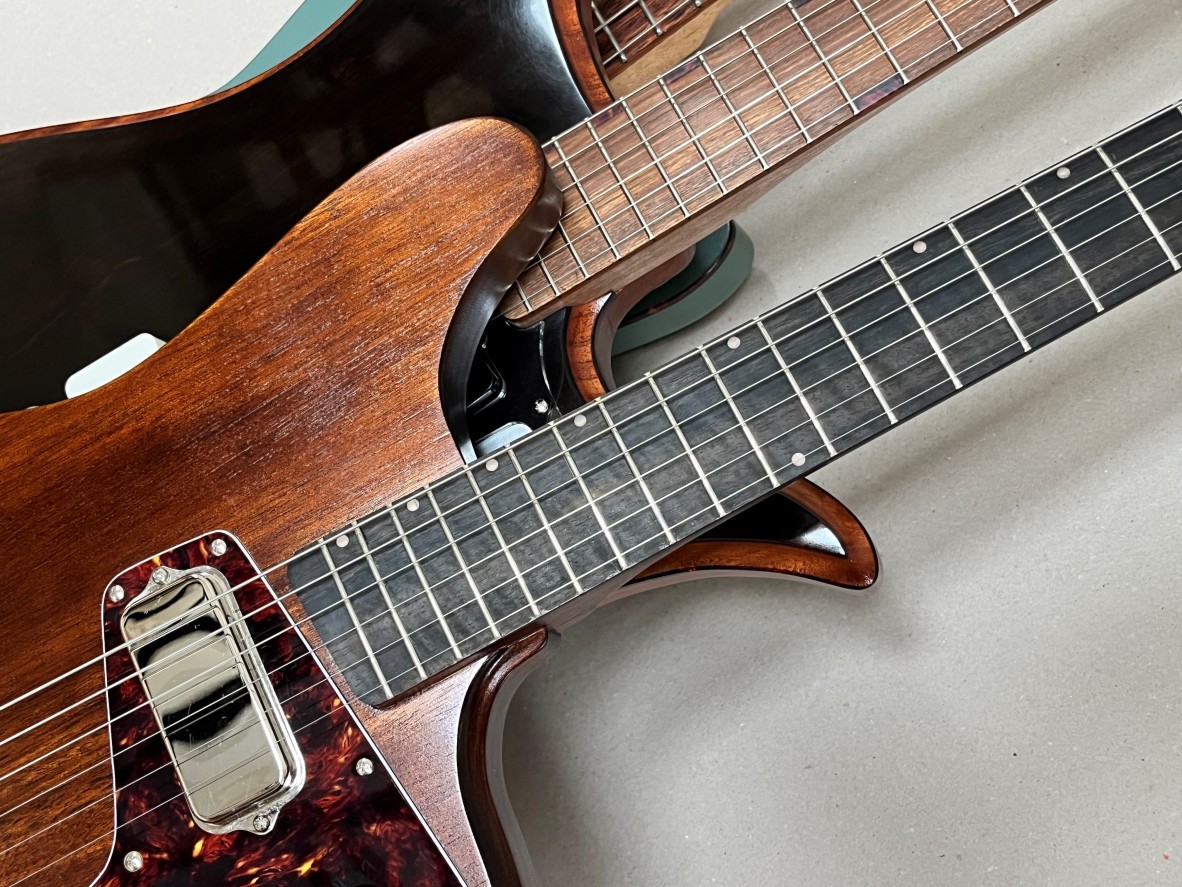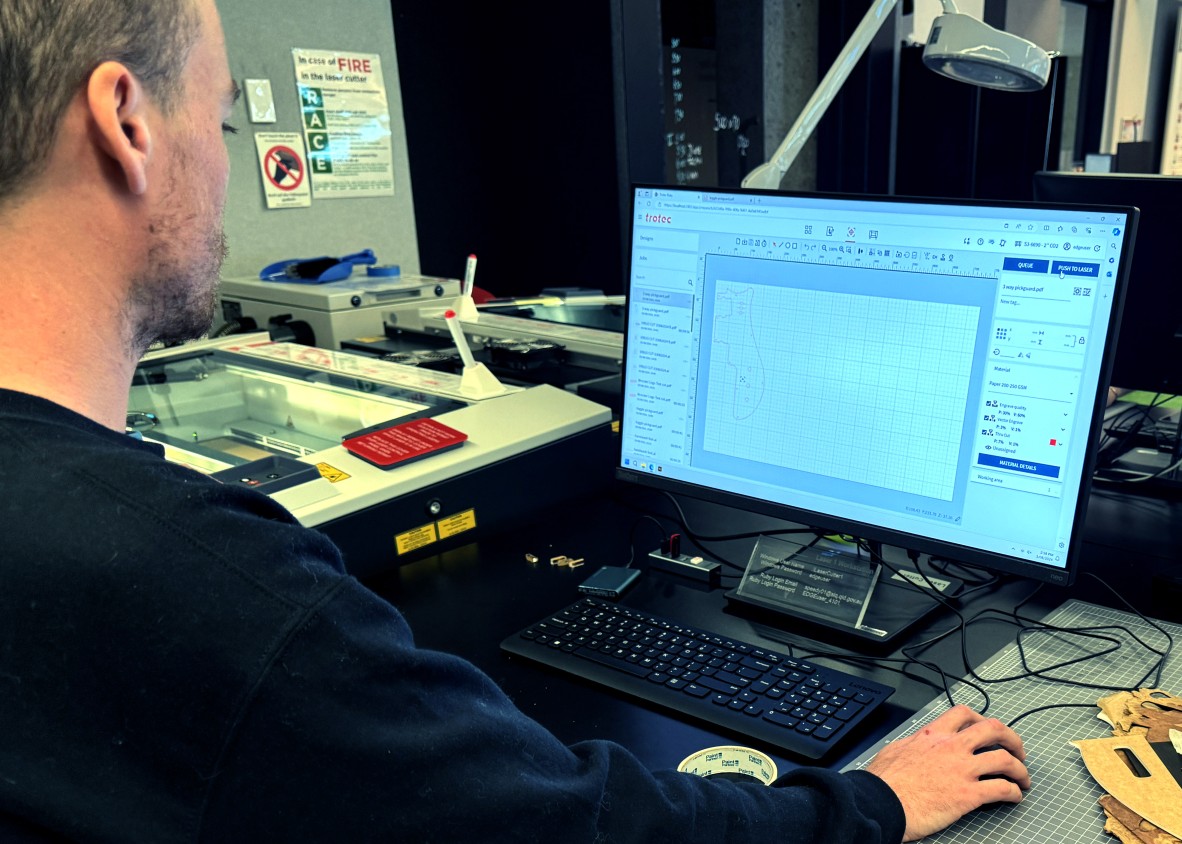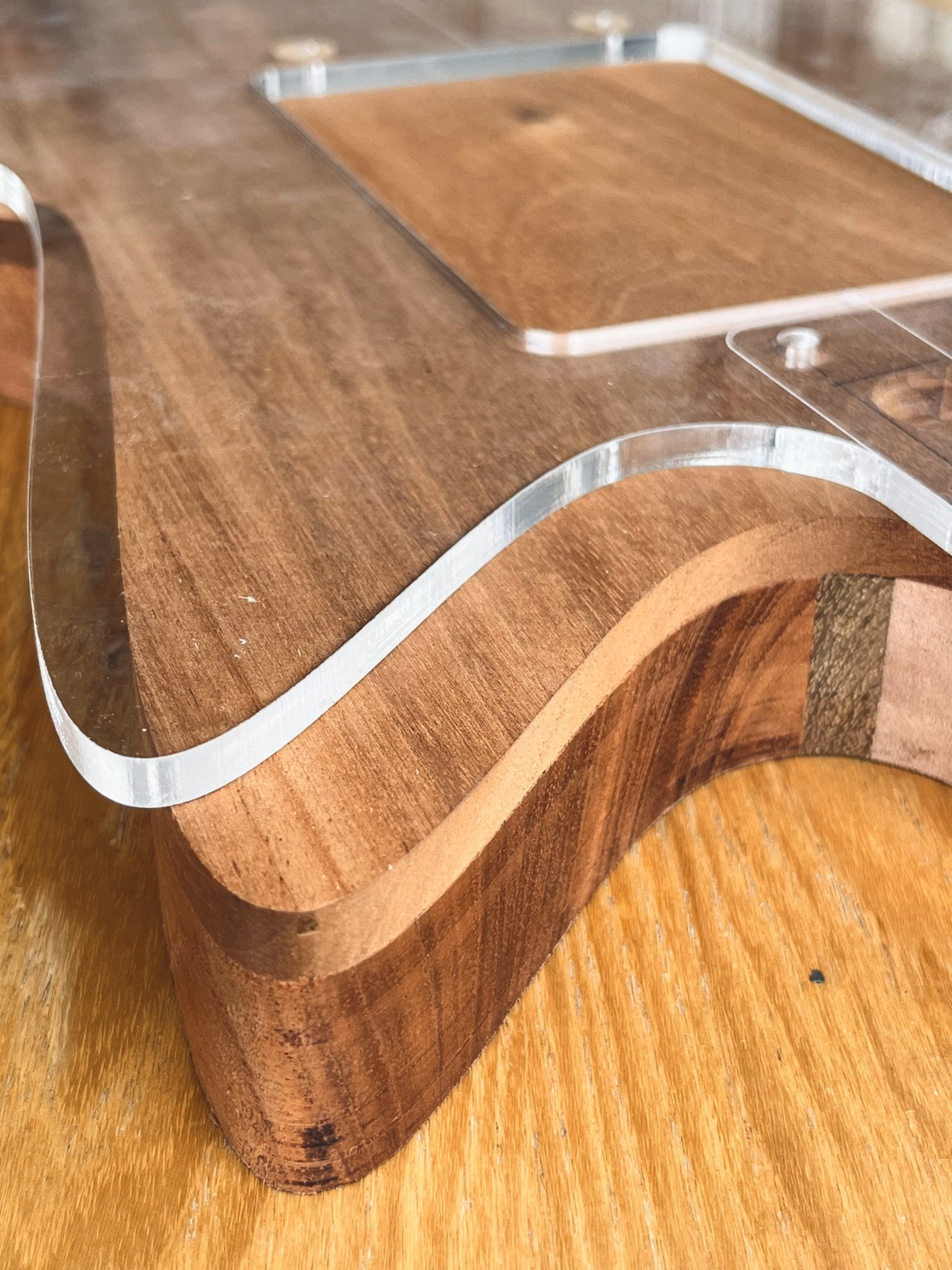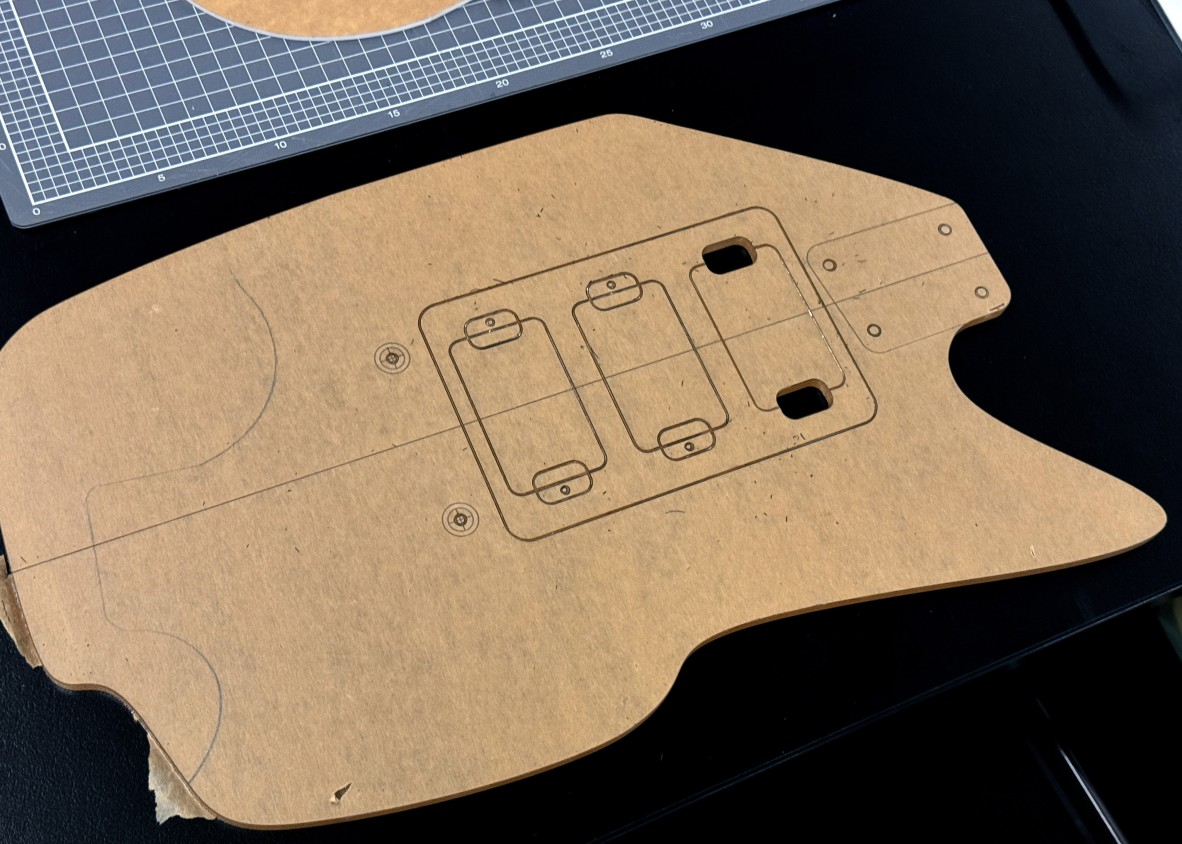We had a chat to luthier Louis Whelan from Wrecker Guitars about his use of the laser cutter at The Edge to create custom guitars.

Tell us about Wrecker Guitars?
Founded in 2023, Wrecker Guitars is a Meanjin (Brisbane) based business offering bespoke guitars and basses as well as instrument repairs. Crafted by luthier and former Maton Guitar factory worker Louis Whelan, Wrecker guitars are made using as much recycled and salvaged material as possible, thoughtfully designed to suit each customer's preference and needs.
How did you first discover the laser cutting facilities at The Edge, and what inspired you to incorporate them into your guitar-making process?
I was told about the laser cutting facilities at the edge by a friend, and was lucky enough to get into the very next induction session! Precision is crucial in guitar building (the margin of error being 0.2 mm according to my first mentor), and often involves intricate finishing details as well as the use of templates, guides and jigs. The accuracy and versatility of laser-cutting technology enables me to produce components such as these quickly and accurately, making it an amazing resource for a luthier.
Could you describe the specific guitar parts you’ve created using the laser cutter, and how this technology has impacted your overall workflow?
The main application of laser cutters in my practice is the production of guitar building templates, which allow me to re-create parts such as the neck, body and fingerboard over and over to the exact same dimensions. This significantly speeds up the early stages of a build and allows for pinpoint accuracy in the placement of hardware and electronics.


How do you approach blending traditional craftsmanship with modern fabrication techniques like laser cutting in your guitar designs?
I have recently started experimenting with using laser cutters to make finely detailed wooden inlays. Traditionally inlays would be done by hand, making them very time consuming and limited in how much detail can be included. By cutting out a design (the Wrecker logo for example) out of two different pieces of timber veneer, I can then mix and match the materials to make two-tone badges which can be inlayed into a headstock. Laser cutters can also be used to etch intricate fingerboard inlays, which is something I will experiment with in the future!
What are some of the challenges you’ve faced when working with laser-etched guitar parts, and how have the tools at The Edge helped you overcome them?
One challenge that comes with using wooden materials in particular is working out the exact right settings for each type of timber. Setting the strength of the laser too strong/weak or too fast/slow can result in burning up materials and ruining designs, or not taking enough material - resulting in an incomplete cut. The software at The Edge is very easy to understand however, and with the guidance of staff these problems are usually resolved quickly. My recommendation: always do a small test cut first before setting the lasers to work on a full design!
Do you plan to use any of the other resources at The Edge in your creative process?
Yes, I plan to explore 3D printers for producing guitar parts (knobs, pickup covers, etc) and will be booking into an induction session soon!
Learn more about The Edge and keep an eye out for upcoming Laser Inductions to start creating your own laser projects!



Comments
Your email address will not be published.
We welcome relevant, respectful comments.